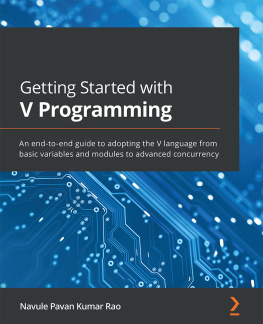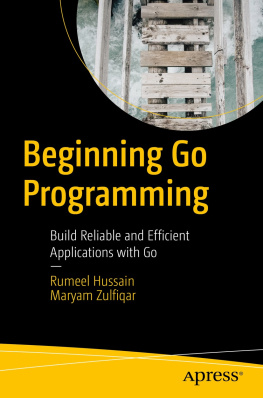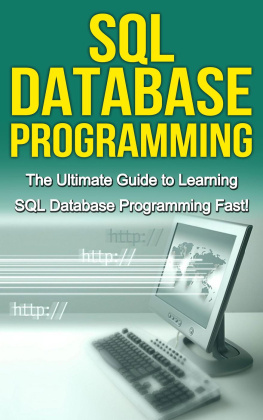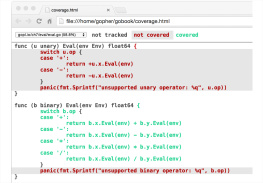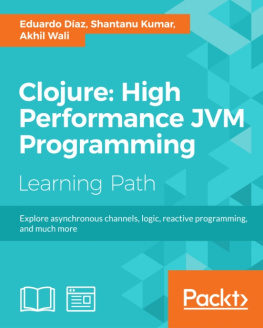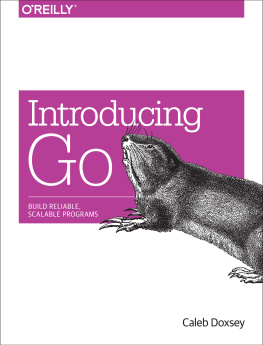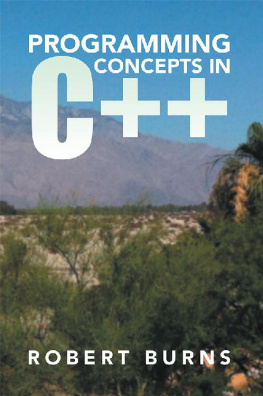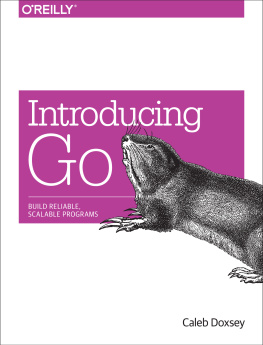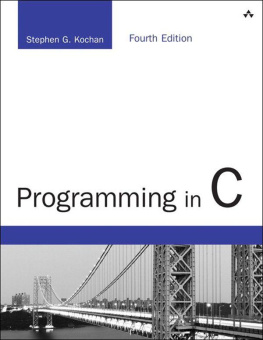Navule Pavan Kumar Rao - Getting Started with V Programming: An end-to-end guide to adopting the V language from basic variables and modules to advanced concurrency
Here you can read online Navule Pavan Kumar Rao - Getting Started with V Programming: An end-to-end guide to adopting the V language from basic variables and modules to advanced concurrency full text of the book (entire story) in english for free. Download pdf and epub, get meaning, cover and reviews about this ebook. year: 2021, publisher: Packt Publishing, genre: Computer. Description of the work, (preface) as well as reviews are available. Best literature library LitArk.com created for fans of good reading and offers a wide selection of genres:
Romance novel
Science fiction
Adventure
Detective
Science
History
Home and family
Prose
Art
Politics
Computer
Non-fiction
Religion
Business
Children
Humor
Choose a favorite category and find really read worthwhile books. Enjoy immersion in the world of imagination, feel the emotions of the characters or learn something new for yourself, make an fascinating discovery.
- Book:Getting Started with V Programming: An end-to-end guide to adopting the V language from basic variables and modules to advanced concurrency
- Author:
- Publisher:Packt Publishing
- Genre:
- Year:2021
- Rating:3 / 5
- Favourites:Add to favourites
- Your mark:
Getting Started with V Programming: An end-to-end guide to adopting the V language from basic variables and modules to advanced concurrency: summary, description and annotation
We offer to read an annotation, description, summary or preface (depends on what the author of the book "Getting Started with V Programming: An end-to-end guide to adopting the V language from basic variables and modules to advanced concurrency" wrote himself). If you haven't found the necessary information about the book — write in the comments, we will try to find it.
Learn a new statically compiled programming language to build maintainable and fast software with the help of this comprehensive guide to V programming
Key Features- Explore the features of the V programming language step by step with this beginners guide
- Gain strong foundational knowledge of core programming concepts such as modules, functions, and structs
- Learn how to write super-fast programs and applications that compile in a matter of seconds
A new language on the block, V comes with a promising set of features such as fast compilation and interoperability with other programming languages. This is the first book on the V programming language, packed with concise information and a walkthrough of all the features you need to know to get started with the language.
The book begins by covering the fundamentals to help you learn about the basic features of V and the suite of built-in libraries available within the V ecosystem. Youll become familiar with primitive data types, declaring variables, arrays, and maps. In addition to basic programming, youll develop a solid understanding of the building blocks of programming, including functions, structs, and modules in the V programming language.
As you advance through the chapters, youll learn how to implement concurrency in V Programming, and finally learn how to write test cases for functions. This book takes you through an end-to-end project that will guide you to build fast and maintainable RESTful microservices by leveraging the power of V and its built-in libraries.
By the end of this V programming book, youll be well-versed with the V programming language and be able to start writing your own programs and applications.
What you will learn- Become familiar with the basic building blocks of programming in the V language
- Install the V language on various operating systems
- Understand how to work with arrays and maps in V programming
- Discover how to implement concurrency in V programming
- Understand best practices of sharing memory by letting coroutines communicate with each other using channels in V
- Write modular code and build on your knowledge of structs and functions in V
- Get acquainted with writing tests in V programming
- Get to grips with building and querying RESTful microservice in V
Whether youre a beginner interested in learning a programming language or an experienced programmer looking to switch to a new and better statically compiled programming language, this V programming book is for you.
Table of Contents- Introduction to V Programming
- Installing V Programming
- Variables, Constants and Code Comments
- Primitive Data Types
- Arrays and Maps
- Conditionals and Iterative Statements
- Functions
- Structs
- Modules
- Concurrency
- Channels: An advanced concurrency pattern
- Testing
- Introduction to JSON and ORM
- Building a Microservice
Navule Pavan Kumar Rao: author's other books
Who wrote Getting Started with V Programming: An end-to-end guide to adopting the V language from basic variables and modules to advanced concurrency? Find out the surname, the name of the author of the book and a list of all author's works by series.

